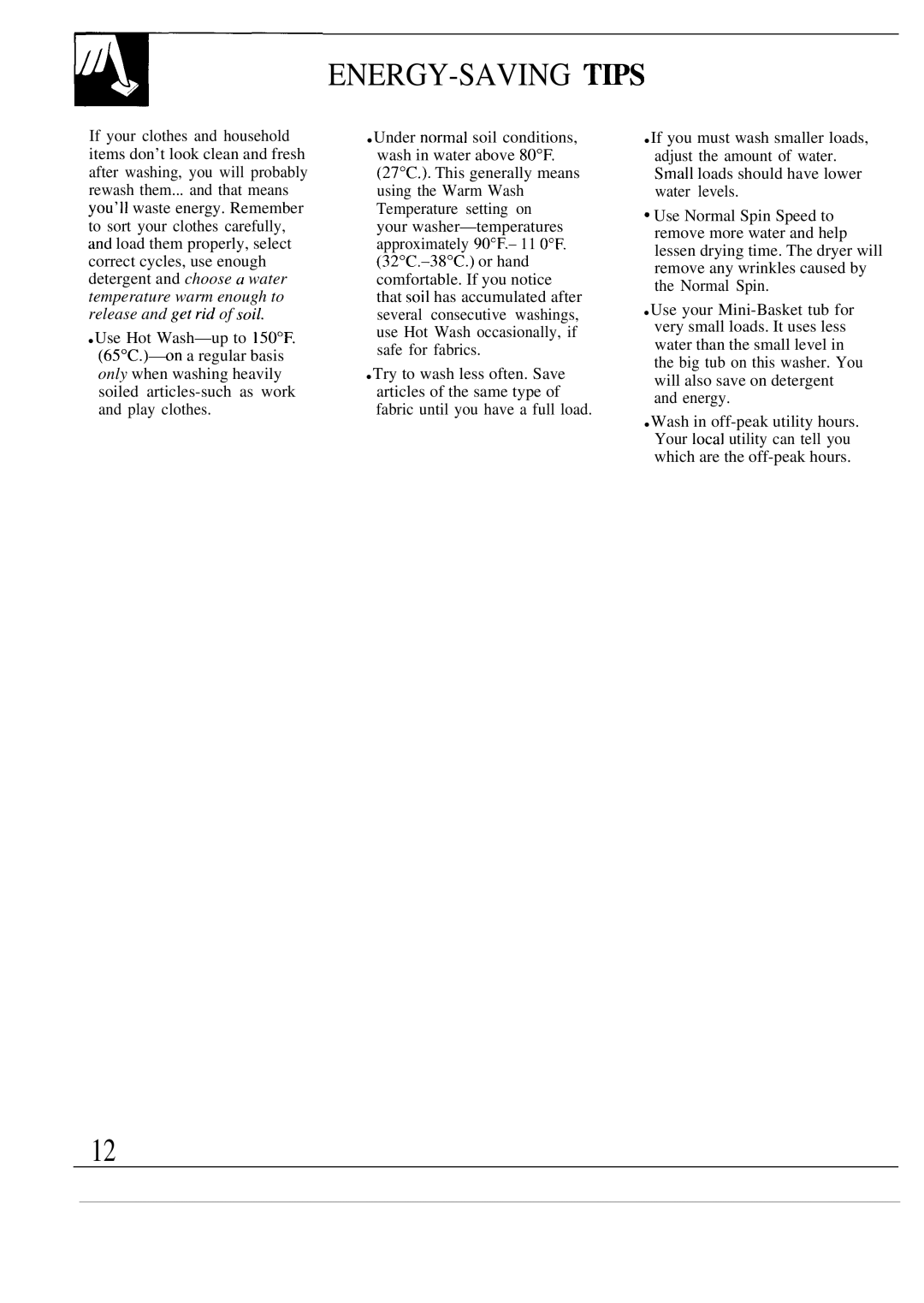
ENERGY-SAVING TWS
If your clothes and household items don’t look clean and fresh after washing, you will probably rewash them... and that means you’ll waste energy. Remember to sort your clothes carefully, and load them properly, select correct cycles, use enough detergent and choose a water temperature warm enough to release and get rjd of sojl.
●Use Hot
●Under normal soil conditions, wash in water above 80°F. (27°C.). This generally means using the Warm Wash Temperature setting on
your
●Try to wash less often. Save articles of the same type of fabric until you have a full load.
●If you must wash smaller loads, adjust the amount of water. Small loads should have lower water levels.
“Use Normal Spin Speed to remove more water and help lessen drying time. The dryer will remove any wrinkles caused by the Normal Spin.
●Use your
●Wash in
12
